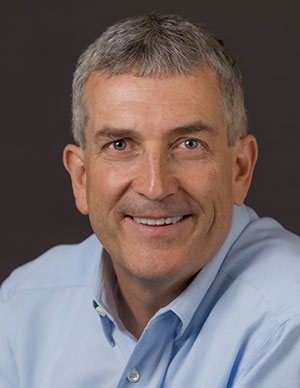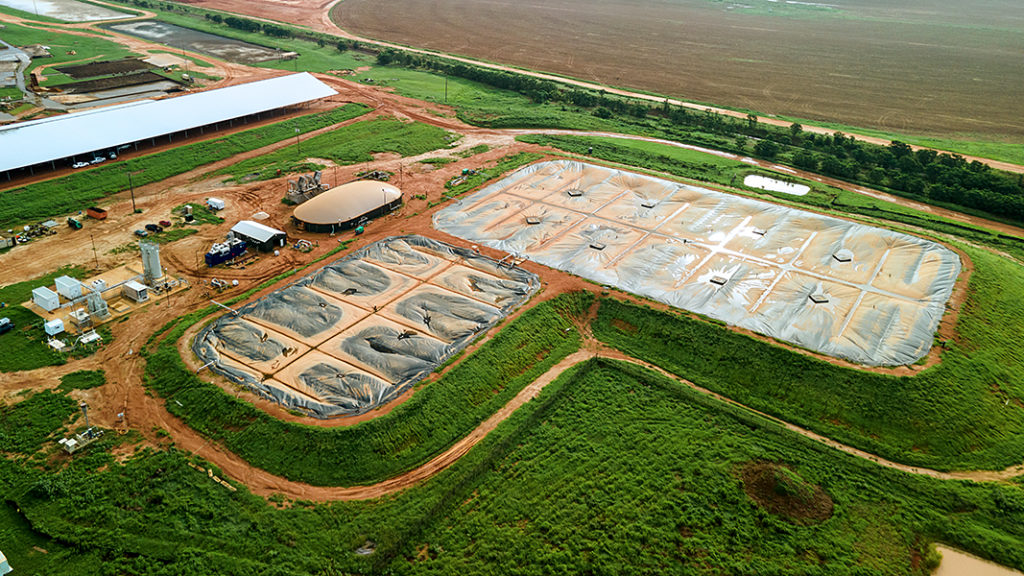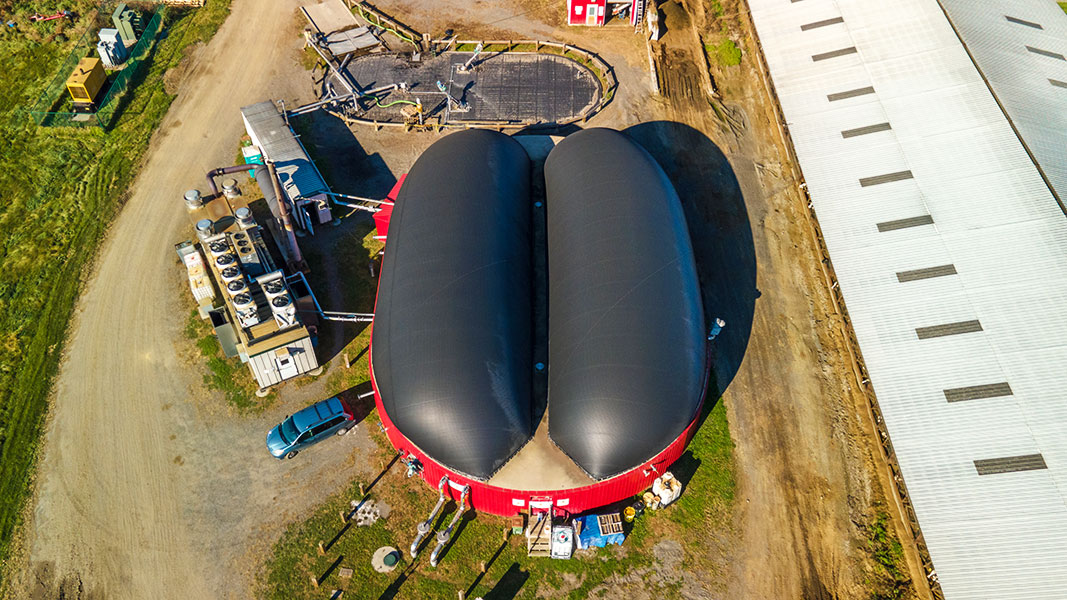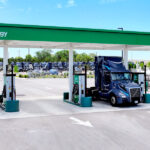Top: Bar-Way Farm in Deerfield, Massachusetts is one of the Vanguard Organics codigestion facilities. Photo by John Maciel
Nora Goldstein

Neil Smith, CEO, Vanguard Renewables
The July 27 edition of BioCycle CONNECT reported that Massachusetts-based Vanguard Renewables, an anaerobic digester developer founded in 2014, was acquired by BlackRock Real Assets from Vision Ridge Partners, the original majority investor in the AD company. The deal, valued at $700 million, will lead to BlackRock investing an estimated $2 billion in growing Vanguard’s portfolio of facilities. Shortly after the acquisition was announced, BioCycle spoke with Vanguard Renewables’ CEO Neil Smith to gain more insights into the acquisition.
BioCycle: Can you explain the timing of the sale to BlackRock?
Smith: We needed a partner who had the ambition to deploy $2 billion over the next three to five years to expand our infrastructure to over 100 plants. John Hanselman and Kevin Chase, Vanguard’s founders, and a core team helped lead the company to where it is today, and now we have the right ingredients to scale nationally.
BioCycle: How does your company’s mission align with BlackRock’s?
Smith: Vanguard is a mission-driven company working to repurpose methane for good, and I believe for BlackRock, it is not just an acquisition. It is skating to where the puck will be in the future — not where the puck is now. We align on the purpose of our businesses, and that is where the magic begins.
BioCycle: How far along is Vanguard in its expansion plans?
Smith: We’ve been working over the last two years to get sites identified. Our development projects are divided into two categories — codigestion of dairy manure with inedible food waste under the name Vanguard Organics, and digestion of manure only under the name Vanguard Ag. We are evaluating codigestion largely around the top 30 metropolitan areas in the U.S. On the Vanguard Ag side, those are all at large format farms with over 10,000 to 40,000 head of dairy cows. Those sites tend to be less proximate to metropolitan areas. With Vanguard Organics, we develop, build, own and operate the digesters on dairy farms. Vanguard Ag, developed in partnership with Dominion Energy in 2019, converts manure into RNG. Dominion owns the assets and Vanguard executes the development, construction management and operational activities.
BioCycle: Only one of the Vanguard Organics facilities — on Goodrich Farm in Salisbury, Vermont — currently generates renewable natural gas (RNG) from the codigested manure and food waste streams. Do you envision expanding generation of RNG at similar projects as you expand nationwide?
Smith: The RNG offtake agreement we have in Vermont is with the utility, Vermont Gas Systems. It is a voluntary market with the “green gas” purchased by Vermont Gas customers, with the largest customer being Middlebury College. We are looking to replicate that program with utilities in other states as we expand.
BioCycle: Is there a strong voluntary market for RNG?
Smith: We are focusing on the top 400 to 500 early adopter public companies, such as Starbucks and Unilever, which have made commitments to net zero or zero carbon neutral by a certain date and are now looking to implement the necessary programs. Vanguard is getting a lot of interest from companies to buy the RNG for thermal uses, especially for manufacturing processes that can’t be done easily with electricity, as well as buildings that utilize natural gas for heating and are able to replace the fossil gas with RNG. We just announced that Chobani, Kikkoman Foods Inc., Schreiber Foods, Hillebrand, Polar Beverages, and Vermont Creamery joined our Farm Powered Strategic Alliance (FPSA/Alliance), a collaborative movement to boost food waste reduction and recycling, and expand renewable energy production across America. The FPSA is a group of like-minded companies committed to helping mitigate the climate crisis. That includes diversion of inedible organic waste and turning it into RNG.

The covered lagoon anaerobic digester facility at Leatherbrook Holsteins dairy farm in Americus, Georgia was co-developed by Vanguard Ag and Dominion Energy. Photo by Tess Jutras
BioCycle: How much does Vanguard Renewables rely on the federal Renewable Fuel Standard and state low carbon fuel standard programs for RNG revenues?
Smith: I think both are very important and necessary when it comes to supporting the development of the large format Ag projects but they are really not playing a meaningful role today in the Organics projects.
BioCycle: Looking ahead, do you see revenue potential for Vanguard on the digestate side?
Smith: We are seeing great crop yields on farms that utilize what we call our “low carbon, high nutrient fertilizer.” We know the benefits anecdotally, but need to conduct research to quantify them. Finding ways to commercially sell the digestate is an opportunity that we haven’t yet put our hands around — but it is on the horizon, especially with the cost of conventional fertilizer going through the roof.
BioCycle: As part of the company’s expansion across the U.S., will you be building more dedicated Organics Recycling Facilities (ORF) to preprocess food waste streams, like the ORF in Agawam, Massachusetts?
Smith: We plan to add depackaging or an ORF at almost every new site for the 60 to 70 Vanguard Organics’ sites we build over the next three to five years. The default will be to add that preprocessing capacity adjacent to a facility in order to widen the range of feedstocks we can accept.
BioCycle: Are there any new developments technology-wise, e.g, phosphorus removal systems or digester designs, that you will be using?
Smith: Vanguard uses a multitude of suppliers and with our growth, a multitude of manufacturers. There are a lot of viable, competing technologies that do similar things by and large. The difference is how we string the technologies together on a project-by-project requirement basis, not the individual components themselves.













